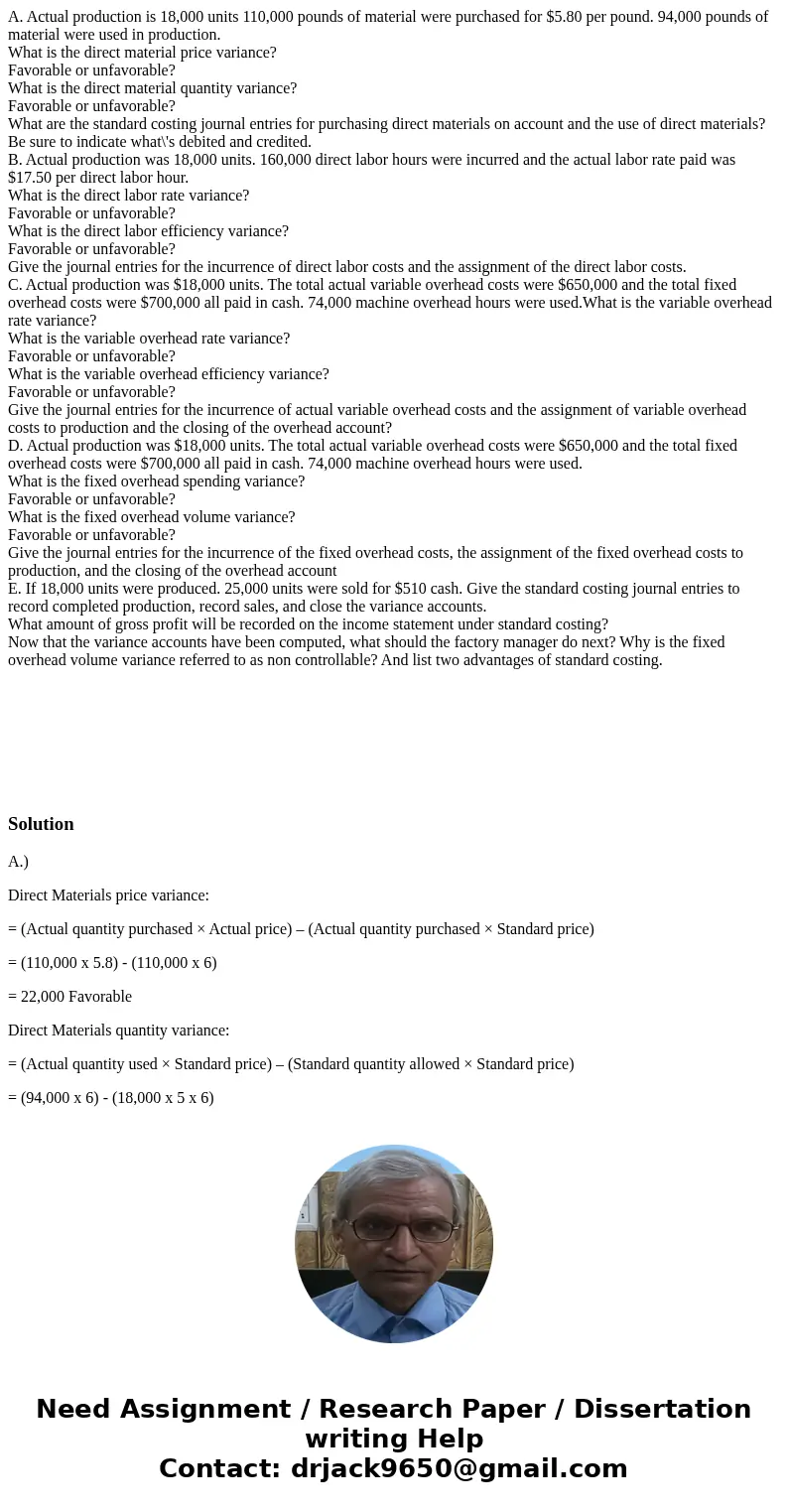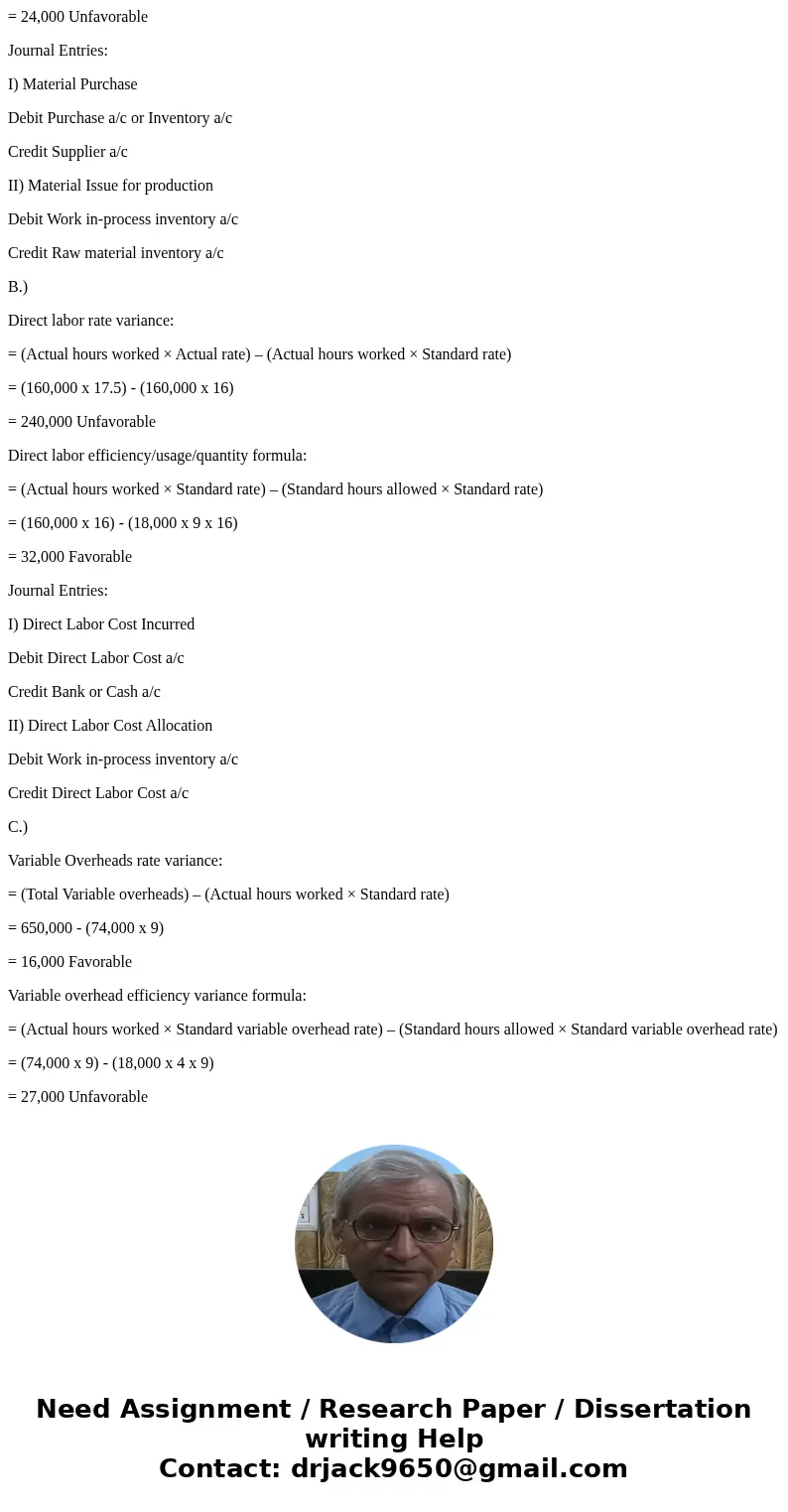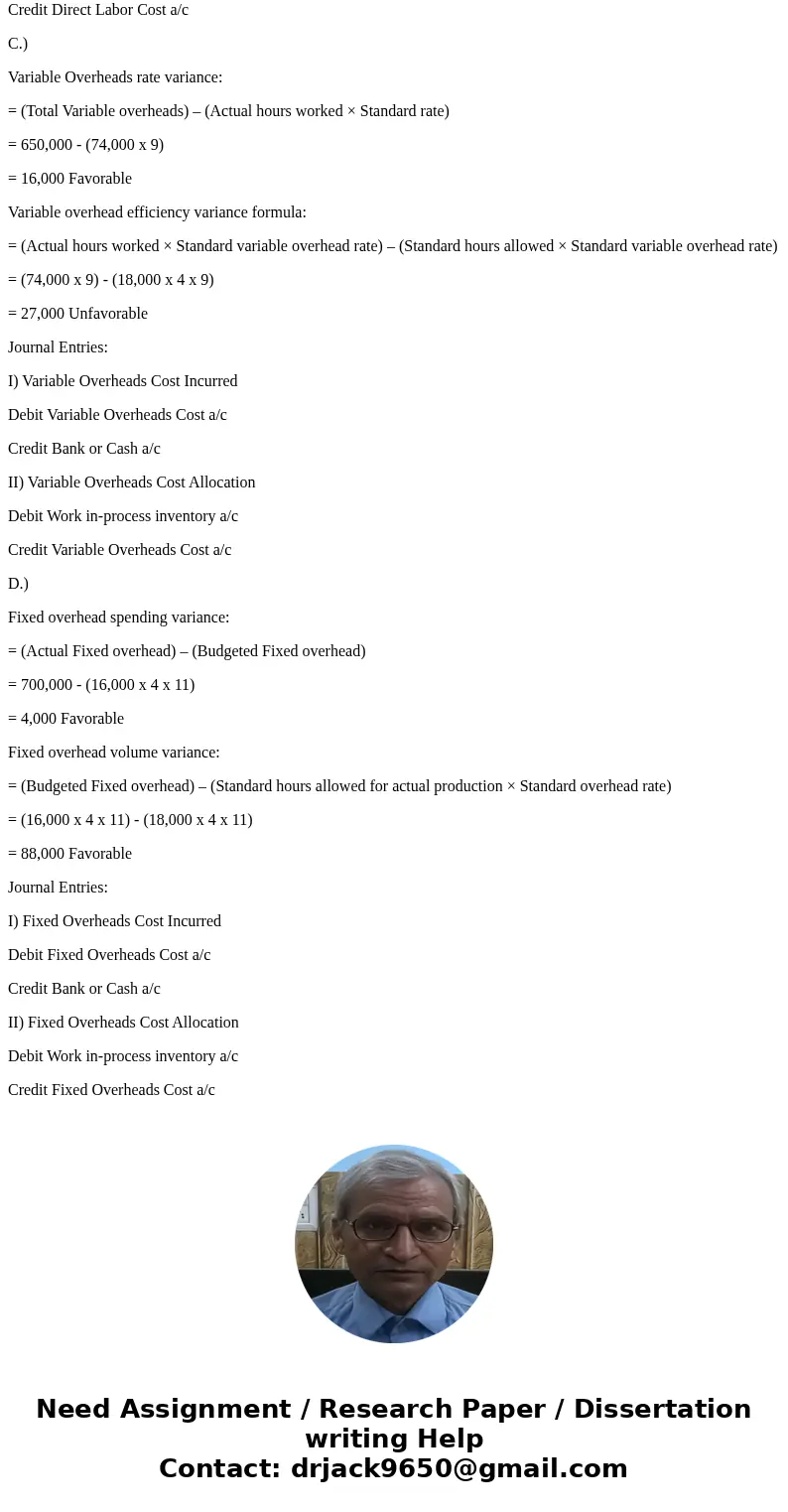A. Actual production is 18,000 units 110,000 pounds of material were purchased for $5.80 per pound. 94,000 pounds of material were used in production.
What is the direct material price variance?
Favorable or unfavorable?
What is the direct material quantity variance?
Favorable or unfavorable?
What are the standard costing journal entries for purchasing direct materials on account and the use of direct materials? Be sure to indicate what\'s debited and credited.
B. Actual production was 18,000 units. 160,000 direct labor hours were incurred and the actual labor rate paid was $17.50 per direct labor hour.
What is the direct labor rate variance?
Favorable or unfavorable?
What is the direct labor efficiency variance?
Favorable or unfavorable?
Give the journal entries for the incurrence of direct labor costs and the assignment of the direct labor costs.
C. Actual production was $18,000 units. The total actual variable overhead costs were $650,000 and the total fixed overhead costs were $700,000 all paid in cash. 74,000 machine overhead hours were used.What is the variable overhead rate variance?
What is the variable overhead rate variance?
Favorable or unfavorable?
What is the variable overhead efficiency variance?
Favorable or unfavorable?
Give the journal entries for the incurrence of actual variable overhead costs and the assignment of variable overhead costs to production and the closing of the overhead account?
D. Actual production was $18,000 units. The total actual variable overhead costs were $650,000 and the total fixed overhead costs were $700,000 all paid in cash. 74,000 machine overhead hours were used.
What is the fixed overhead spending variance?
Favorable or unfavorable?
What is the fixed overhead volume variance?
Favorable or unfavorable?
Give the journal entries for the incurrence of the fixed overhead costs, the assignment of the fixed overhead costs to production, and the closing of the overhead account
E. If 18,000 units were produced. 25,000 units were sold for $510 cash. Give the standard costing journal entries to record completed production, record sales, and close the variance accounts.
What amount of gross profit will be recorded on the income statement under standard costing?
Now that the variance accounts have been computed, what should the factory manager do next? Why is the fixed overhead volume variance referred to as non controllable? And list two advantages of standard costing.
A.)
Direct Materials price variance:
= (Actual quantity purchased × Actual price) – (Actual quantity purchased × Standard price)
= (110,000 x 5.8) - (110,000 x 6)
= 22,000 Favorable
Direct Materials quantity variance:
= (Actual quantity used × Standard price) – (Standard quantity allowed × Standard price)
= (94,000 x 6) - (18,000 x 5 x 6)
= 24,000 Unfavorable
Journal Entries:
I) Material Purchase
Debit Purchase a/c or Inventory a/c
Credit Supplier a/c
II) Material Issue for production
Debit Work in-process inventory a/c
Credit Raw material inventory a/c
B.)
Direct labor rate variance:
= (Actual hours worked × Actual rate) – (Actual hours worked × Standard rate)
= (160,000 x 17.5) - (160,000 x 16)
= 240,000 Unfavorable
Direct labor efficiency/usage/quantity formula:
= (Actual hours worked × Standard rate) – (Standard hours allowed × Standard rate)
= (160,000 x 16) - (18,000 x 9 x 16)
= 32,000 Favorable
Journal Entries:
I) Direct Labor Cost Incurred
Debit Direct Labor Cost a/c
Credit Bank or Cash a/c
II) Direct Labor Cost Allocation
Debit Work in-process inventory a/c
Credit Direct Labor Cost a/c
C.)
Variable Overheads rate variance:
= (Total Variable overheads) – (Actual hours worked × Standard rate)
= 650,000 - (74,000 x 9)
= 16,000 Favorable
Variable overhead efficiency variance formula:
= (Actual hours worked × Standard variable overhead rate) – (Standard hours allowed × Standard variable overhead rate)
= (74,000 x 9) - (18,000 x 4 x 9)
= 27,000 Unfavorable
Journal Entries:
I) Variable Overheads Cost Incurred
Debit Variable Overheads Cost a/c
Credit Bank or Cash a/c
II) Variable Overheads Cost Allocation
Debit Work in-process inventory a/c
Credit Variable Overheads Cost a/c
D.)
Fixed overhead spending variance:
= (Actual Fixed overhead) – (Budgeted Fixed overhead)
= 700,000 - (16,000 x 4 x 11)
= 4,000 Favorable
Fixed overhead volume variance:
= (Budgeted Fixed overhead) – (Standard hours allowed for actual production × Standard overhead rate)
= (16,000 x 4 x 11) - (18,000 x 4 x 11)
= 88,000 Favorable
Journal Entries:
I) Fixed Overheads Cost Incurred
Debit Fixed Overheads Cost a/c
Credit Bank or Cash a/c
II) Fixed Overheads Cost Allocation
Debit Work in-process inventory a/c
Credit Fixed Overheads Cost a/c



 Homework Sourse
Homework Sourse